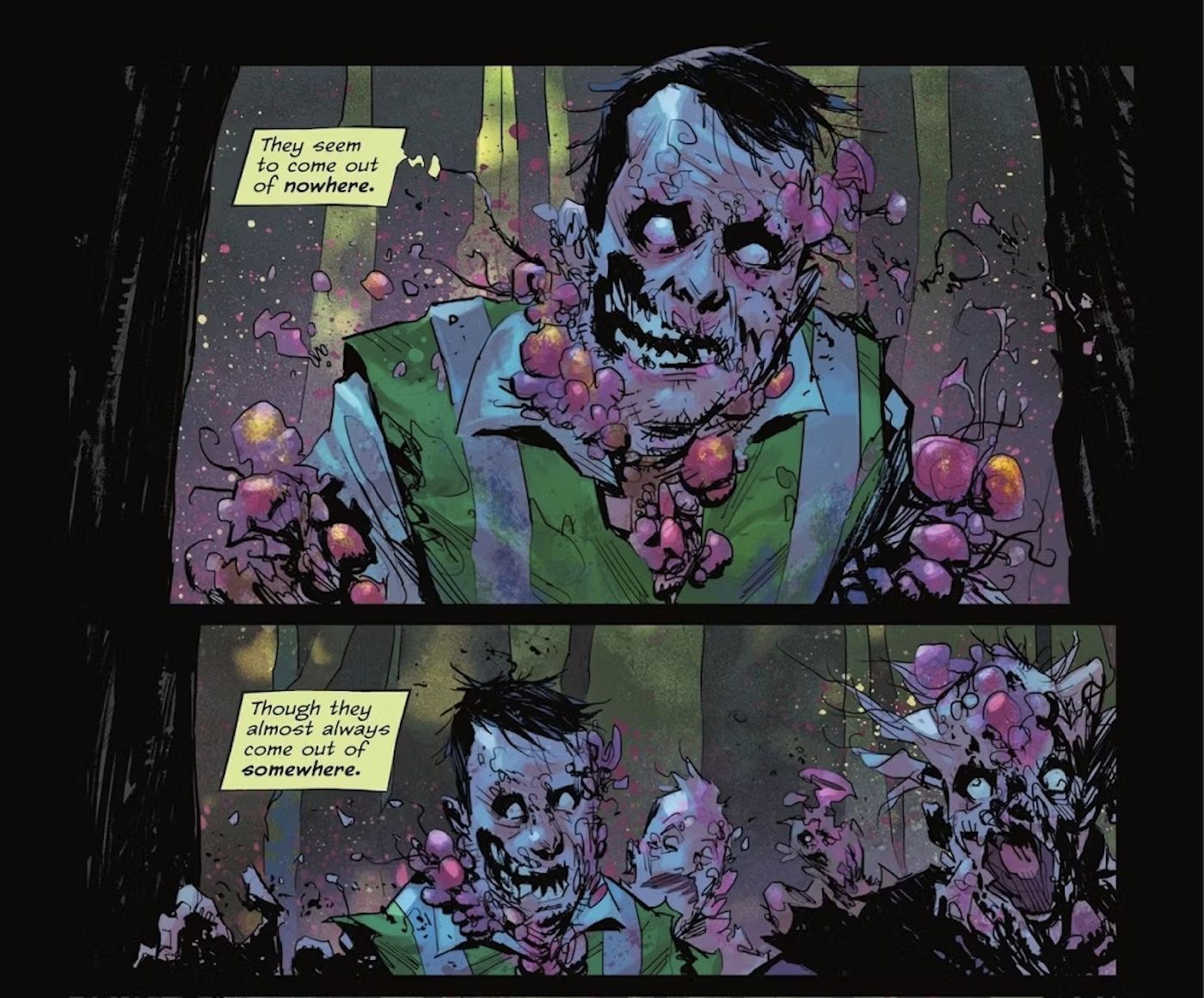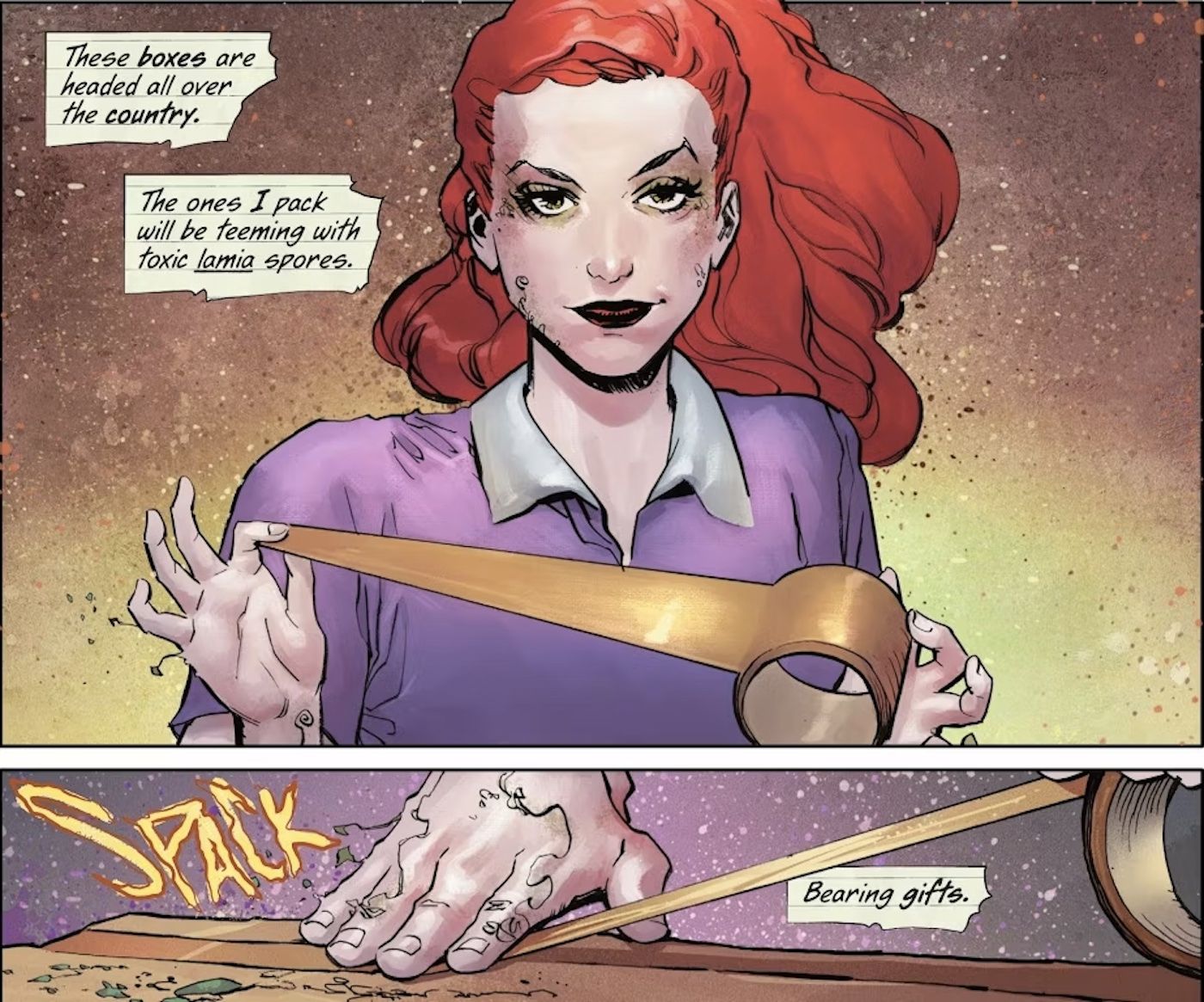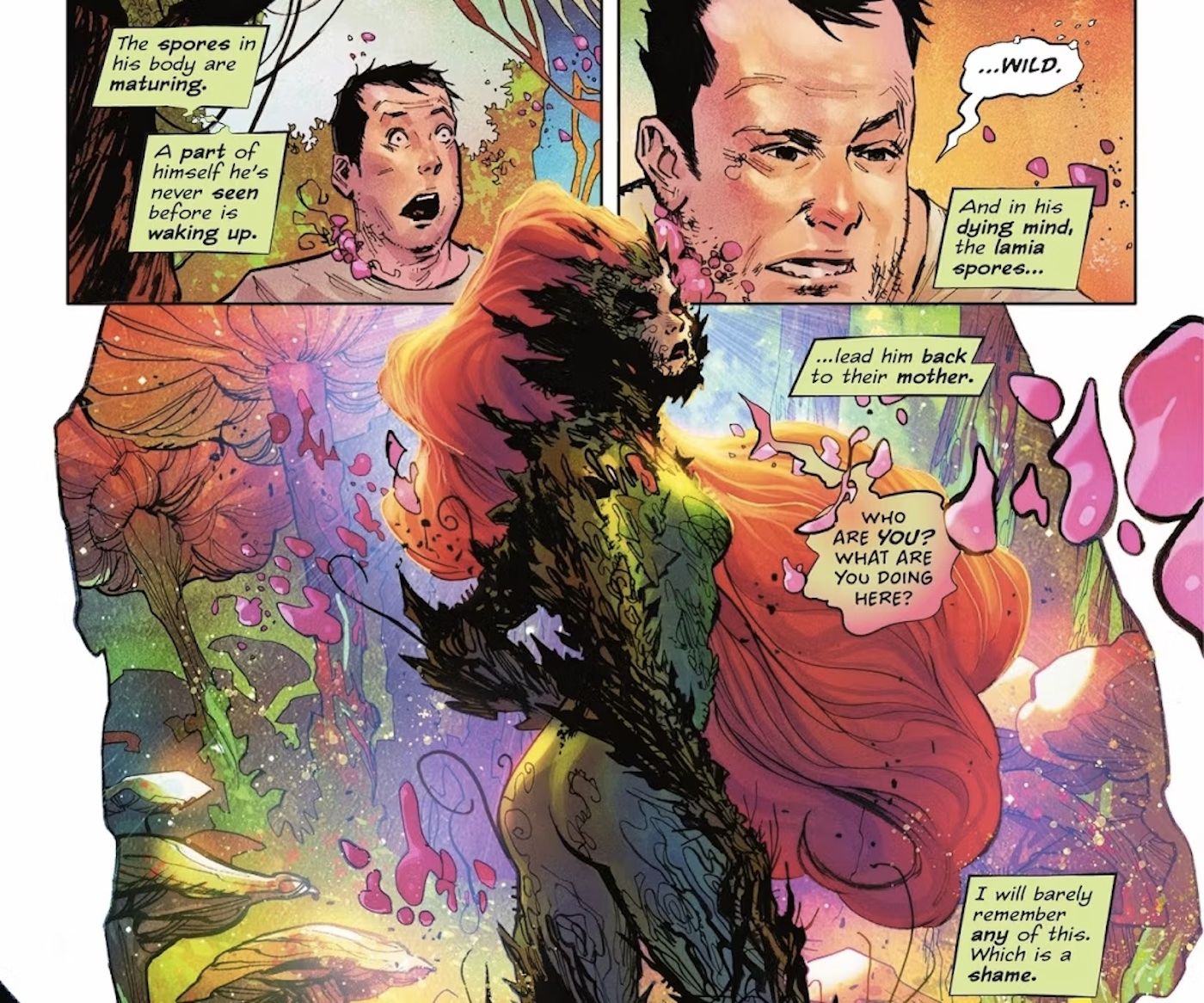Warning: Contains spoilers for Poison Ivy #16!
Gotham City has housed more than its share of monsters and villains, even tangling with the undead on more than one occasion, but Poison Ivy has unleashed a fungal plague of epic proportions. The Lamia spores she so carefully started to spread are beyond her control, and now they’re finding their way back to her – one way or another.
In Poison Ivy #16 by G. Willow Wilson, Marcio Takara, and Arif Prianto, the consequences of Poison Ivy’s actions are dragging themselves toward her. Yet hardly anyone knows what her Lamia spores have done to the people they affected.

Since she began spreading them, they’ve taken on a life of their own, mutating and changing into something that appears beyond her control. As they seek her out, it remains to be seen whether the central figure in their network can reign in what she’s created.
Poison Ivy Intended Lamia to Cause Mass Destruction

In Poison Ivy #1, Ivy had already started to unleash what she hoped would be a brutally efficient and quick plague that destroyed humanity. Humans were a curse on the Earth, and paving the way for the planet’s recovery meant removing all people from the equation. Pam believed that Ophiocordyceps Lamia was created as a bioweapon meant to cause mass destruction. When she stole it from Jason Woodrue (aka The Floronic Man), that’s precisely what she intended to do. As she used her own healing factor to fight back the spores inside her body, she began to purposefully spread them to others across the country by releasing them into the air, infecting packaging, and spreading them through granaries.
However, a confrontation with Woodrue revealed that the Lamia spores were intended to be used for surveillance. They didn’t spread as quickly as Ivy hoped, and they certainly hadn’t caused the extinction of humanity (or anything close to it). Her failure was somewhat of a relief, as her travels had shown her that humans were as much a part of the Green as anything else, and there was still hope to save it all. The Lamia spores were not simply dormant as Pam went on her journey of self-discovery, however. They were rapidly changing, affected by her own physiology and the tightly interconnected network they’d formed with her at the center.
Ivy’s Victims Are Searching for Her

Although her original aim was to eradicate humanity, Pam didn’t intend to cause physical suffering in the process. Death from Lamia was meant to be quick, even “blissful,” yet reality has been much different. Those infected die slowly and begin seeing her in their dreams before the spores overtake and kill them. Once Lamia is in the driver’s seat, there’s little to nothing “human” left about them. There is no saving them after a certain point, either, even with the antidote Ivy created in Poison Ivy #12 and some are incredibly dangerous.
No one has sounded a real alarm about the slow-growing outbreak, meaning the Bat-Family and Gotham will be caught off guard. The lack of urgency gives the fungal dead plenty of time to converge on the city as they search for their “Mother.” They haven’t attempted to infect others yet, but if that changes, Gotham is the perfect Ground Zero. It’s crowded, and particularly chaotic in the middle of the Gotham War. Stopping the spread may be impossible. For now, the Lamia zombies are on the move and Poison Ivy may get her mass extinction event after all.





